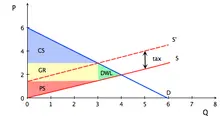Economics Terms A-Z
Elasticity and Inelasticity
Read a summary or generate practice questions using the INOMICS AI tool
Elasticity refers to how much a business, a producer, or a consumer changes its amount of goods demanded or supplied as a result of price and income fluctuation. It provides answers to some useful questions, such as how much more or less a product will sell if the price changes. It’s defined for both quantity demanded (price elasticity of demand) and supplied (price elasticity of supply).
The formula for elasticity is straightforward. It can be found by dividing the percentage change in quantity demanded by the percentage change in price. However, this simple formula (known as the point elasticity formula) yields a different answer depending on which point is chosen as the first point. Sometimes, this is undesirable behavior.
To correct for this, economists also use a formula for elasticity shown below. This is known as the midpoint formula (sometimes also called arc elasticity). This is a very similar formula to that for elasticity of substitution, cross elasticity of demand and income elasticity of demand.
\begin{equation*}
\text{Elasticity}= \frac{\frac{\mathit{Q}_{2}-\mathit{Q}_{1}}{(1/2)*(\mathit{Q}_{2}+\mathit{Q}_{1})}}{\frac{\mathit{P}_{2}-\mathit{P}_{1}}{(1/2)*(\mathit{P}_{2}+\mathit{P}_{1})}} = \frac{\text{%}\Delta\mathit{Q}}{\text{%}\Delta\mathit{P}}
\end{equation*}
Elasticity is a general term, but forms the basis of several important concepts in economics. For more information on these more specific concepts, please see the other terms that have been linked in this article.
-
- Conferencia
- Posted 1 week ago
EcoMod2026 International Conference on Economic Modeling and Data Science
Between 8 Jul and 10 Jul in Esch-sur-Alzette, Luxemburgo
-
- Assistant Professor / Lecturer Job
- Posted 5 days ago
Assistant Professor - Environmental Economics
At Ritsumeikan Asia Pacific University in Nagano, Japón
-
- PhD Candidate Job
- Posted 2 weeks ago
PhD Candidate in Impact Evaluation of Welfare Programs
At NTNU: Norwegian University of Science and Technology in Trondheim, Noruega














